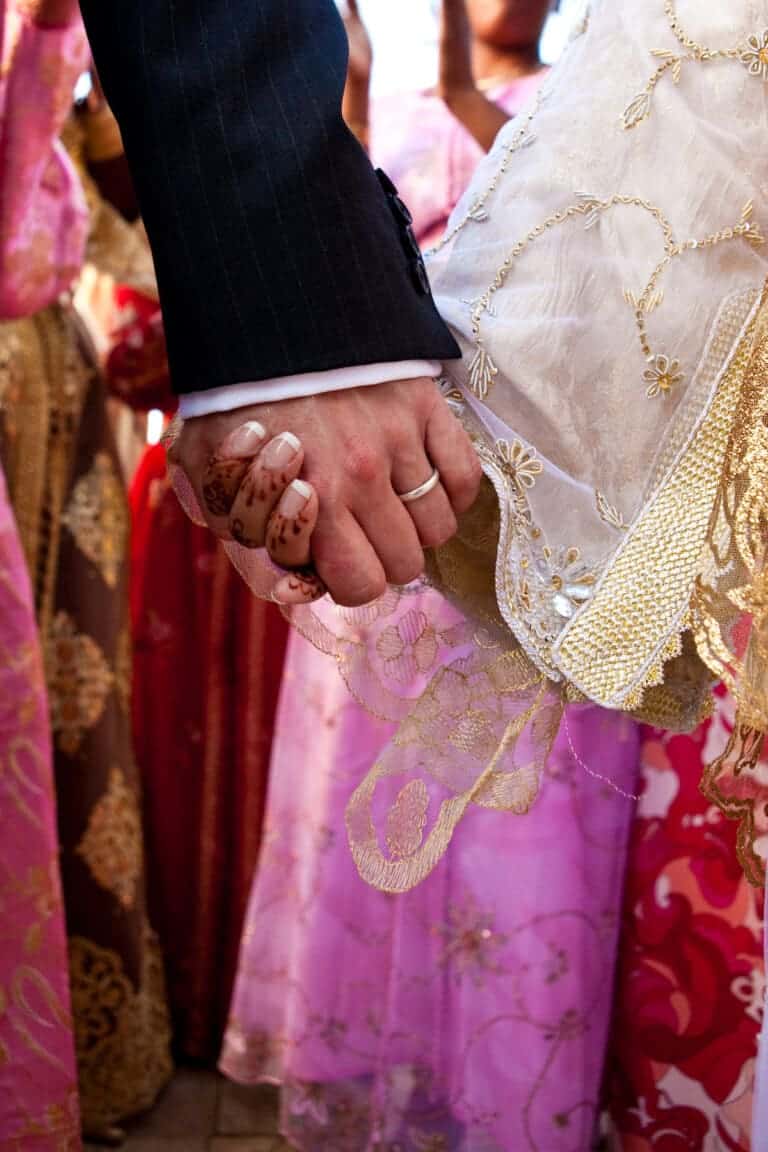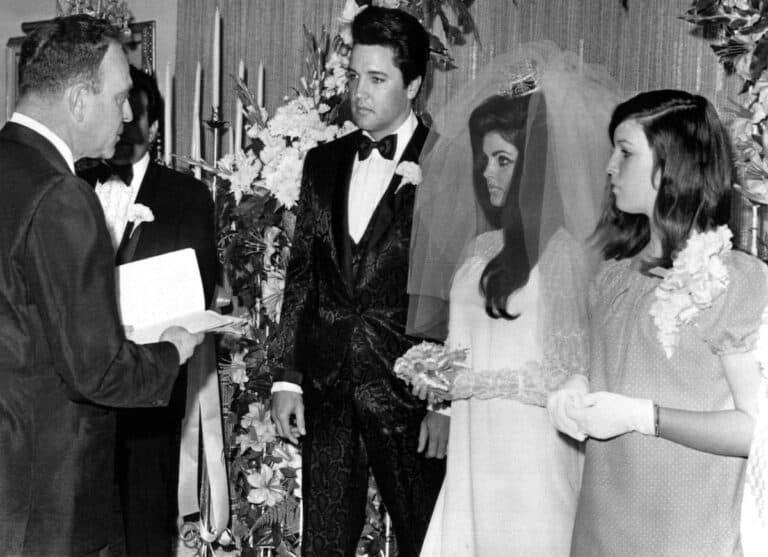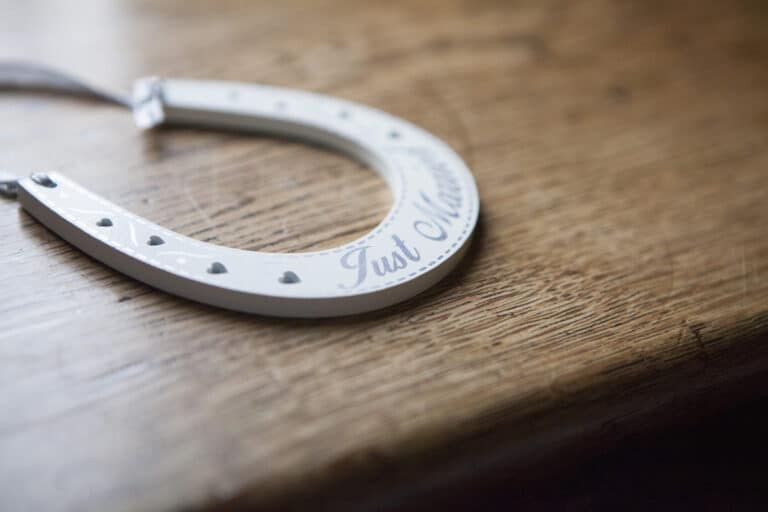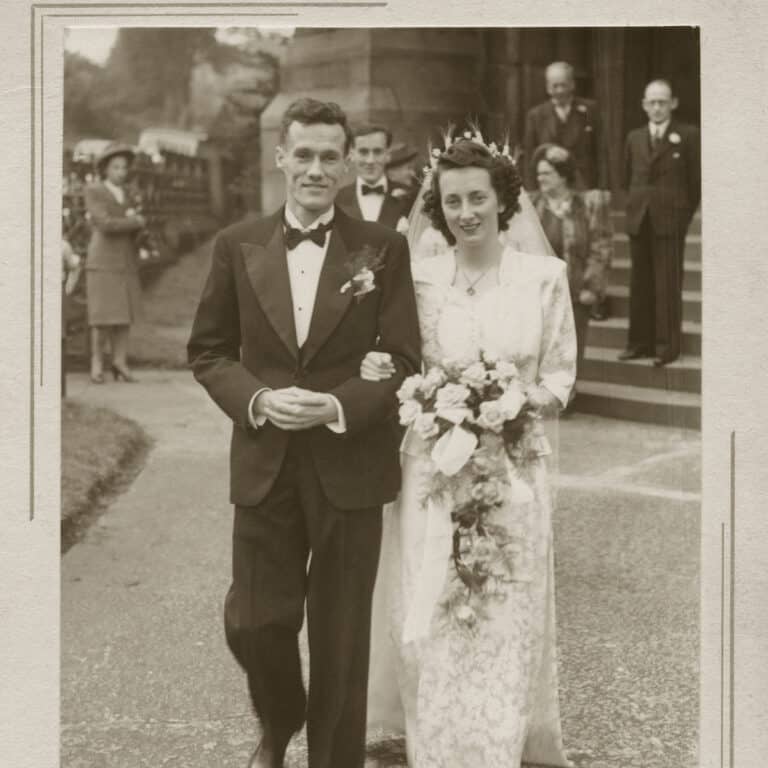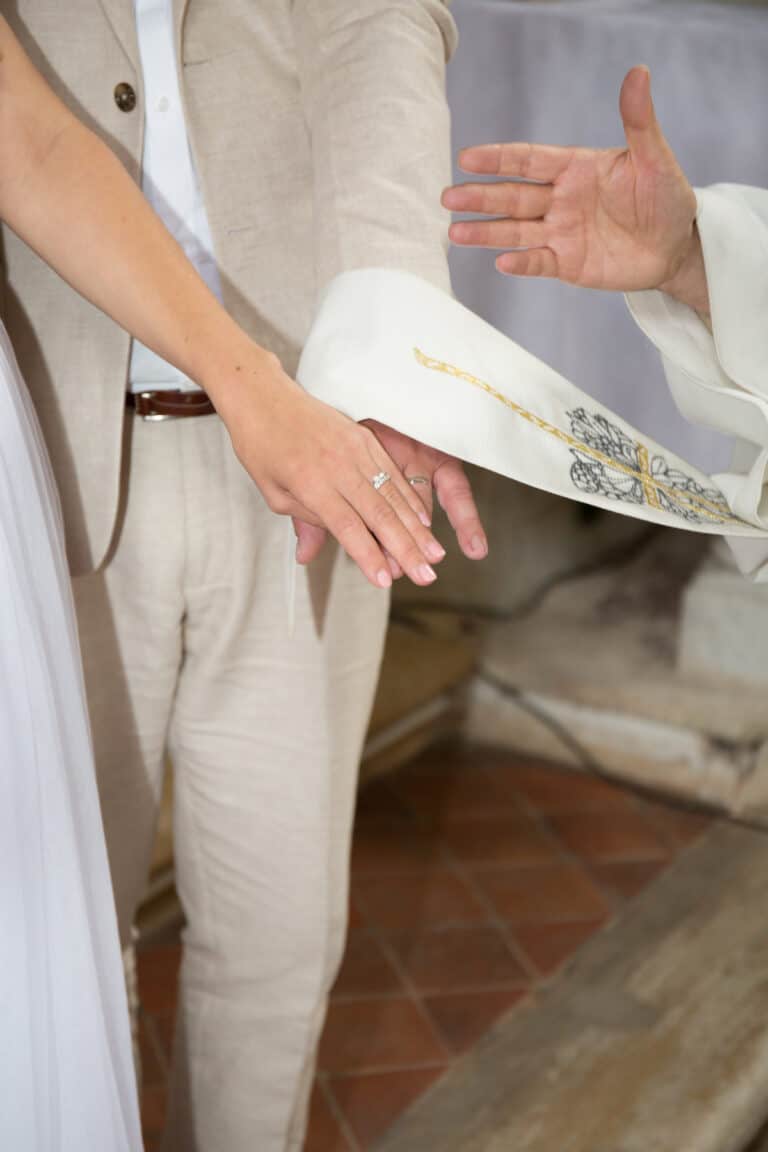Austrian Wedding Traditions
Austrian wedding traditions blend old-world customs and modern elements, reflecting the country’s rich cultural heritage.
Some Austrian wedding traditions include the fetching of the bride, wedding almonds, the shoe auction, and ceremonial log sawing. These are fun rituals you could consider incorporating into your wedding celebration, whether in the traditional sense or in a more modern way. Let’s delve into these further.
Fetching of the Bride
A common tradition still practiced today is the fetching of the bride. Traditionally the bride was taken from her parent’s house before the wedding. Her future husband would go from pub to pub searching for his bride. He would pay any unpaid tabs along the way. Finding his wife was proof he was worthy of marrying her.
Although entertaining and thought to symbolize the bride beginning her new life away from her family, this tradition could be time-consuming. It is not practiced as much today but is thought to originate from the middles ages.
A modern-day “fetching the bride” is for the groom to fetch the bride from his best man‘s house. The groom is often in possession of the bride’s bouquet. They travel by car to the wedding ceremony or registry office.
The path of travel is often blocked by neighbors who present the couple with a task they must complete before they can continue to their marriage ceremony.

Loud Noises
An old Austrian custom in the regions of upper Austria was for the village’s unmarried men to awaken the bride very early on her wedding day. They would do this by using “loud noises.” This was to ward off any bad omen that may hinder the fertility or happiness of the married couple.
Traditionally the bride will spend the night away from her future life partner at her parent’s house. A three-shot gun salute, fireworks, or loud music is used to awaken her early in the morning of her big day. More recently, this tradition has been carried out by close friends and family members of the couple.
Shoe Auction
Traditionally the bride’s shoes are auctioned off at the end of the night. This is an actual auction where the wedding guests must bid on the shoes. However, Austrian tradition states that the final bid must come from the bride’s father or groom. This is as proof he can maintain his daughter’s or wife’s honor.
The money paid for the shoes is gifted to the couple to help fill the newlywed’s purse.
Only Civil Ceremonies are Binding
Religious ceremonies were common in Austrian and often occurred in a catholic church during the Victorian era. However, due to a law change today in Austria, a religious ceremony is not legally binding. A civil ceremony must be performed first and registered with the officials of the vital statistics office before a church union can occur.
It is a common tradition for the newlyweds to arrive at the planned church wedding already married with their wedding party and guests in tow. The US tradition of the bride’s father walking her down the aisle has recently gained popularity.

Sawing of the Log
The cutting or sawing of the log is a wedding custom that offers the newlyweds their first challenge as husband and wife. The cutting of the log takes place outside the wedding venue and is used to prove the couple can use their strength to work as a team and overcome life obstacles.
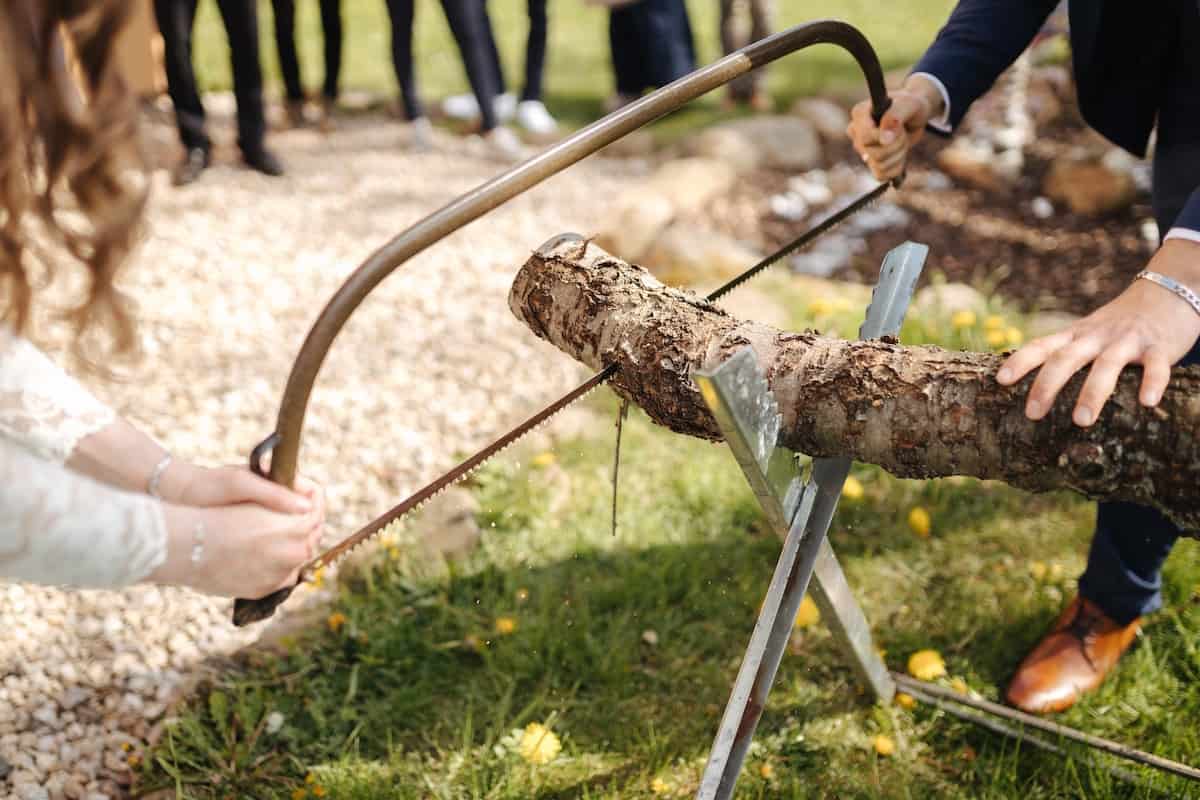
The food
A great way to incorporate Austrian traditions in your wedding is through the food served.
Austrian cuisine is a rich and diverse culinary tradition that has been influenced by its neighboring countries such as Germany, Hungary, and Italy. Here are some of the traditional Austrian dishes that you might want to try:
- Wiener Schnitzel: This is probably the most famous dish of Austrian cuisine. It is a thin, breaded, fried cutlet made from veal.
- Tafelspitz: This is a beef dish, boiled in a broth with vegetables and spices until tender.
- Kaiserschmarrn: This is a traditional dessert made of pancakes, torn into bite-sized pieces and served with fruit compote, and sprinkled with powdered sugar.
- Goulash: This is a hearty stew made of meat, vegetables, and paprika, which is a staple of Hungarian cuisine but is also popular in Austria.
- Apfelstrudel: This is a traditional dessert made from a thin layer of pastry filled with apples, sugar, raisins, cinnamon, and breadcrumbs.
- Palatschinken: This is a thin, crêpe-like dish that is often filled with jam, fruit, chocolate, or cheese.
- Leberknödel: This is a large dumpling made from liver and breadcrumbs, usually served in soup or with gravy.
- Prügeltorte: This is a very cool dish. It’s a cake made over an open fire! Cake batter is drizzled over a spinning barrel, over an open flame. It is often served at special occasions like weddings and Christmas.
These dishes are just a sampling of the many traditional foods that make up Austrian cuisine. Each region of Austria has its specialties and variations on these dishes.
Wedding almonds
Giving guests a tulle bag containing five sugared almonds is a sweet tradition. This little bag has a beautiful message, wishing the guests love and happiness. The common saying goes like this:
“Für Euch, liebe Gäste, als kleiner Gruß
sind diese fünf Mandeln mit süßem Guss.
Sie sind süß und bitter, so wie das Leben.
Sie stehen für Glück, Liebe, Gesundheit, Erfolg und Segen.”
Which translates to
“For you, dear guests, as a little greeting
are these five almonds with sweet icing.
They are sweet and bitter, just like life.
They stand for luck, love, health, success and blessings.”
Agape Celebration
An Agape celebration at an Austrian wedding is a Christian communal meal traditionally served after the wedding ceremony. This is a way for the couple and their guests to come together in love and unity. The term “agape” is a Greek word that means “love.” The Agape feast was a common practice in the early Christian church as a way for Christians to express their love and unity with each other.
The menu for an Agape meal can vary, but it typically consists of simple foods that are easy to prepare and share. It often includes bread and wine.
The Agape has deep roots in the Christian tradition. It is a way for the couple and their guests to come together in a spirit of love and unity, just as early Christians did.
Die Sonne Neiget Sich
‘Die Sonne neiget sich’ is a very traditional wedding song in Austria. It translates to ‘The sun is going down.’ This would often be sung to the bride-to-be the evening before her wedding.
Austrian Waltz
The Viennese waltz is a popular ballroom dance that originated in the 18th century. It has been danced at Austrian weddings for centuries. The bridal Waltz (which originated from folk dance) is performed on a cleared dance floor by the bride and groom for their first dance.
It is then custom for the groom to ask the bride’s mother to have the next dance. Only after that will the dance floor be open to guests.
Superstitions
Wednesday is the lucky day to marry in many European countries, including Austria. It stems from old English folkflore. “Monday for wealth, Tuesday for health, Wednesday the best day of all, Thursday for losses, Friday for crosses, Saturday for no luck at all.”
These days weddings are often held on Sundays.
Austria’s wedding traditions center around bringing good luck to the happy couple and warding off evil spirits. One tradition even went as far as the bridesmaid wearing a similar dress as the bride to confuse any evil spirits. A bridal veil was also worn to protect from evil spirits.
More superstitions
- A chimney sweep, spiders, black cats, and rainbows are good omens for Austrian marriages. If a bride was to see one of these on her wedding day, it was considered good luck. Rain on a wedding day, on the other hand is considered bad luck.
- A bride must never sew her own wedding dress. This job is left to a bridesmaid or family member.
- The bride must never wear her whole wedding attire until the day of the wedding.
- Red and white flowers are to be avoided due to their belief they represented blood and bandages.
- The bride looking in the mirror more than once before leaving for the wedding is considered bad luck.
Final thoughts
Austrian weddings are steeped in rich cultural and religious traditions passed down from generation to generation.
From the bride fetching to traditional Austrian cuisine, log sawing, and Agape, Austrian weddings are a beautiful and meaningful celebration of love and unity.

